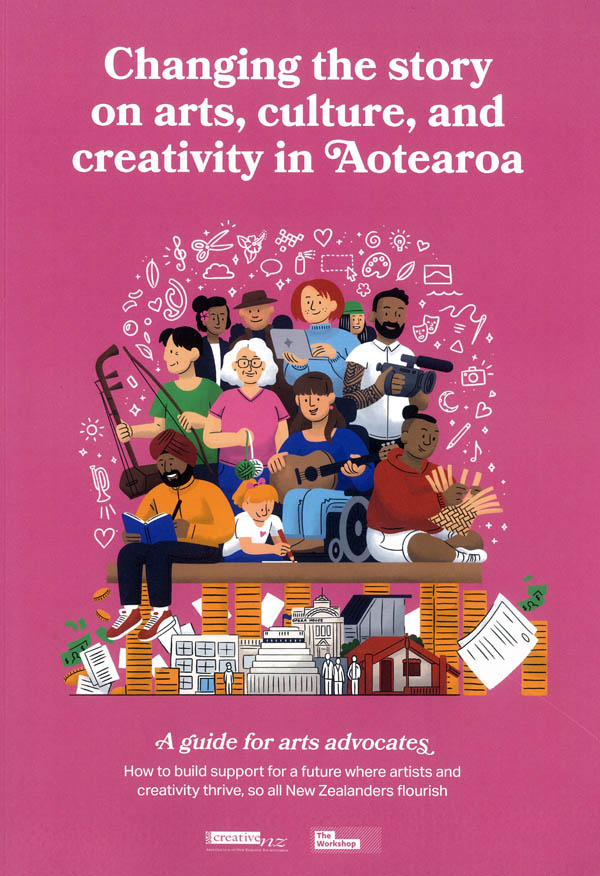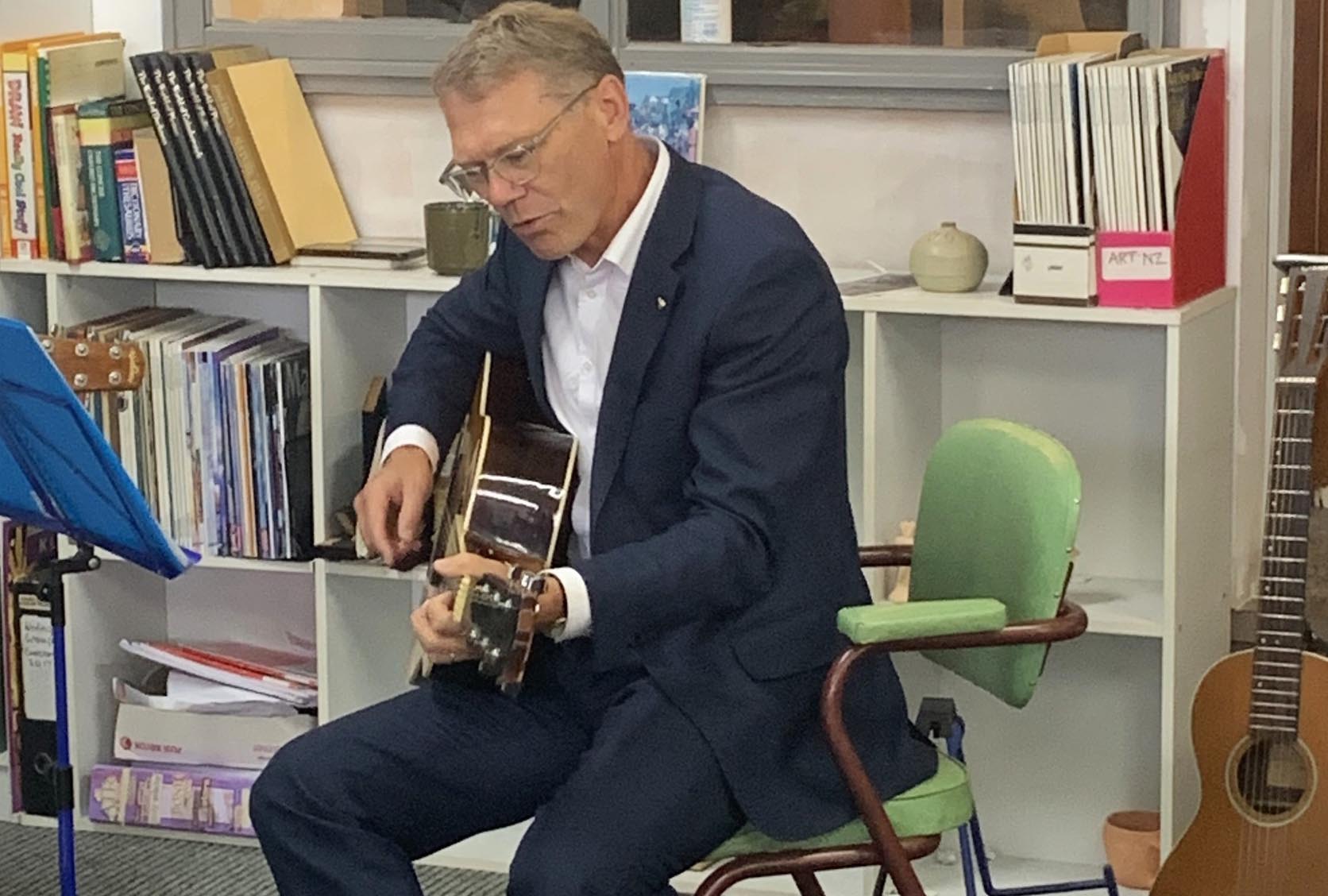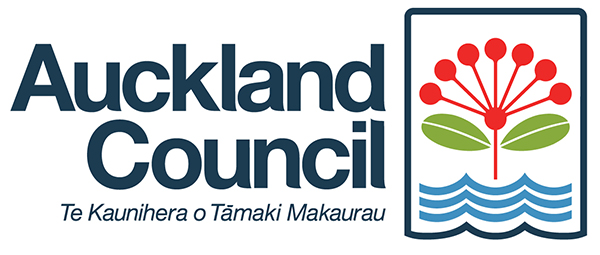How do you talk about the arts, culture and creative sector in a way that helps people understand and support what’s needed for the sector to survive?
 It’s a question posed in Creative New Zealand’s excellent guide Changing the Story on Arts, Culture and Creativity in Aotearoa. You can download this guide and discover other useful advocacy resources on our website.
It’s a question posed in Creative New Zealand’s excellent guide Changing the Story on Arts, Culture and Creativity in Aotearoa. You can download this guide and discover other useful advocacy resources on our website.
One of the guide's pieces of advice I regularly turn to for Arts Access Aotearoa’s advocacy work is to “focus your communications on people who are open to persuasion”. Think about three groups of people you communicate with:
- People who don’t have a fixed view or have mixed views – the “persuadables”
- People who are already persuaded – your supporters, who can share your messages
- People who are opposed to change and unlikely to be persuaded.
It makes sense to focus on meeting the information needs of the people who are open to persuasion, while also communicating with and motivating your supporters.
Community advocacy done well
I was reminded of this when I read the blog by Maria Anderson, who works at Magenta Creative Space in Nelson. Her recent blog, “Support Magenta to keep hope and healing alive”, is an example of community advocacy done well.
.jpg) Magenta has developed a funding campaign to reach out to the community. One of the elements of the campaign is a letter it sent to funding agencies, friends, families and the wider community – supporters and the “persuadables” – about the impact of Magenta and how their donation could make a difference.
Magenta has developed a funding campaign to reach out to the community. One of the elements of the campaign is a letter it sent to funding agencies, friends, families and the wider community – supporters and the “persuadables” – about the impact of Magenta and how their donation could make a difference.
In the letter, Maria paints a vivid picture of what’s at stake when funding is uncertain, describing Magenta as “a place where everyone belongs, creativity flows and love is always present”.
Through personal stories of artists like Pamala, Colin and Mary, she shows how creativity transforms isolation into connection, and despair into self-worth. Her words demonstrate that the most persuasive advocacy is grounded in lived experience and real, human outcomes.
Magenta’s approach also highlights an important truth about effective communication: that advocacy doesn’t need to be complicated or formal to be impactful. Maria’s open letter makes a clear, specific ask but it’s anchored in warmth and community spirit.
Why creative spaces must be sustainably funded
She writes, “Your support doesn’t just keep the studio open; it keeps hope alive.” That sentence encapsulates why creative spaces exist and why they must be sustainably funded.
 Photo Manson Wright.jpg) Another powerful message is delivered in a story about Dunedin artist, art therapist and social activist Maggie Treweek, who founded Magenta Creative Space in 1999. Aged 73, Maggie has always combined her artistic practice with community service and says: “Art has been a means of survival, healing and transformation.”
Another powerful message is delivered in a story about Dunedin artist, art therapist and social activist Maggie Treweek, who founded Magenta Creative Space in 1999. Aged 73, Maggie has always combined her artistic practice with community service and says: “Art has been a means of survival, healing and transformation.”
By the age of 17, Maggie was already working as a social worker and art therapist, using creativity to help young people build confidence and express emotions. This philosophy of empowerment through art became central to her life's work. Thank you, Maggie.
Read Maggie’s story, Showcasing a life dedicated to art.
Arts Access Aotearoa and members of the Creative Spaces Network will be reinforcing the positive impact of the arts and creativity at a half-day forum in Auckland on Tuesday 4 November. Called “Shifting the Stream: rethinking arts investment”, the forum aims to build stronger relationships between creative spaces, funders and supporters.
Local government, a vital investor in the arts
Last weekend the results of local body elections were announced. This means both new and familiar faces sitting at the council table. In your advocacy work, remember that local government is a vital investor in the arts.
 Build relationships with your local councillors, politicians, funders and community leaders, and invite them to visit your creative space and to attend events such as exhibition openings. A single visit can have more impact than any report.
Build relationships with your local councillors, politicians, funders and community leaders, and invite them to visit your creative space and to attend events such as exhibition openings. A single visit can have more impact than any report.
And encourage your supporters to amplify your messages: they are your most credible advocates.
As the Creative New Zealand guide points out, the way we talk about the arts matters. We must connect creativity to the outcomes that people care about: wellbeing, inclusion, identity and community connection.
And it’s about value. What value do we place on community arts programmes that enhance belonging, identity and wellbeing? And what value do we place on this investment in the mental health and resilience of our communities?
Positive outcomes like the ones demonstrated in these stories are evidence of value – to the artists, the funders and the community. It’s essential to communicate these outcomes to your supporters and those who are “persuadable”.
Do take a moment to read Maria’s and Maggie’s blogs. Think about your own story. You will know your supporters but who are your “persuadables”? Who might be open to persuasion if they knew the difference your creative space makes?
Please get in touch with me or anyone in the Arts Access Aotearoa team. We would be happy to help you shape your story and reach a wide and strategic audience. Visit Arts Access Aotearoa’s website for our contact details.


